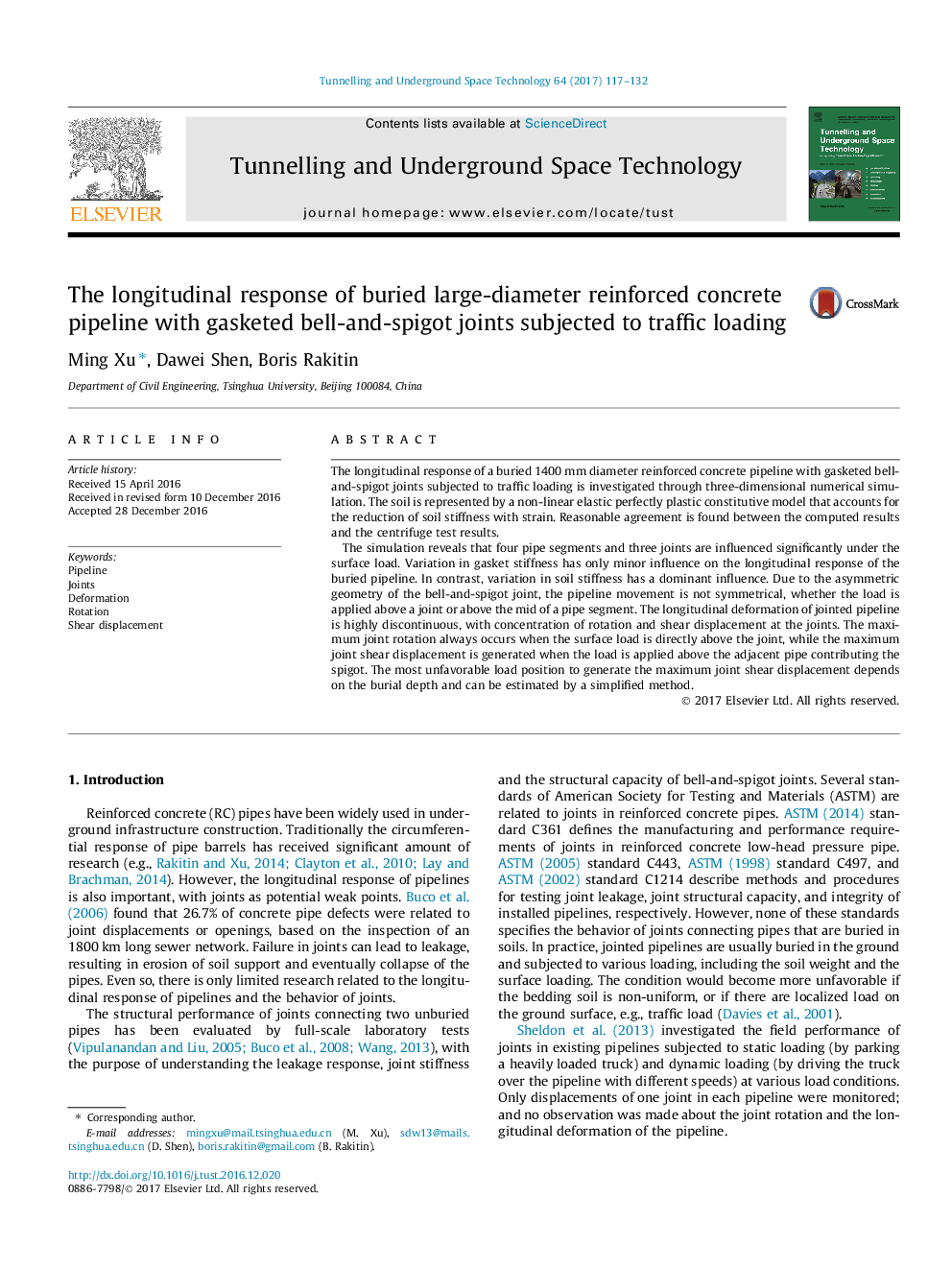| Article ID | Journal | Published Year | Pages | File Type |
|---|---|---|---|---|
| 4929315 | Tunnelling and Underground Space Technology | 2017 | 16 Pages |
Abstract
The simulation reveals that four pipe segments and three joints are influenced significantly under the surface load. Variation in gasket stiffness has only minor influence on the longitudinal response of the buried pipeline. In contrast, variation in soil stiffness has a dominant influence. Due to the asymmetric geometry of the bell-and-spigot joint, the pipeline movement is not symmetrical, whether the load is applied above a joint or above the mid of a pipe segment. The longitudinal deformation of jointed pipeline is highly discontinuous, with concentration of rotation and shear displacement at the joints. The maximum joint rotation always occurs when the surface load is directly above the joint, while the maximum joint shear displacement is generated when the load is applied above the adjacent pipe contributing the spigot. The most unfavorable load position to generate the maximum joint shear displacement depends on the burial depth and can be estimated by a simplified method.
Related Topics
Physical Sciences and Engineering
Earth and Planetary Sciences
Geotechnical Engineering and Engineering Geology
Authors
Ming Xu, Dawei Shen, Boris Rakitin,
